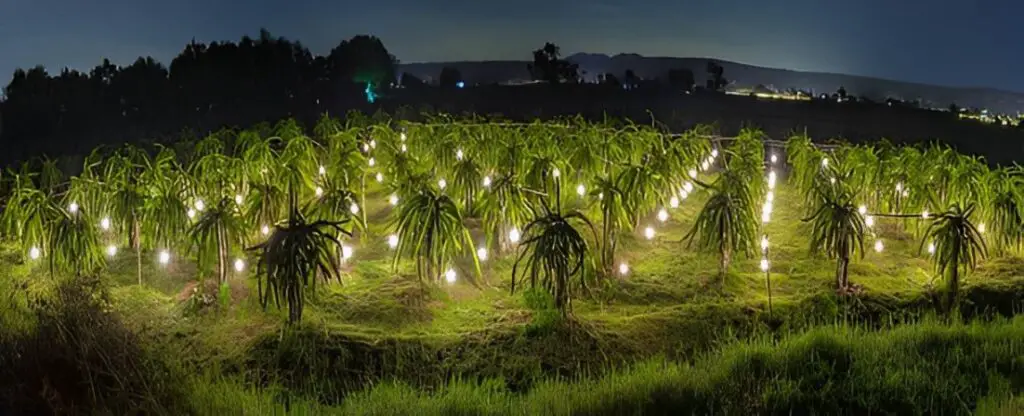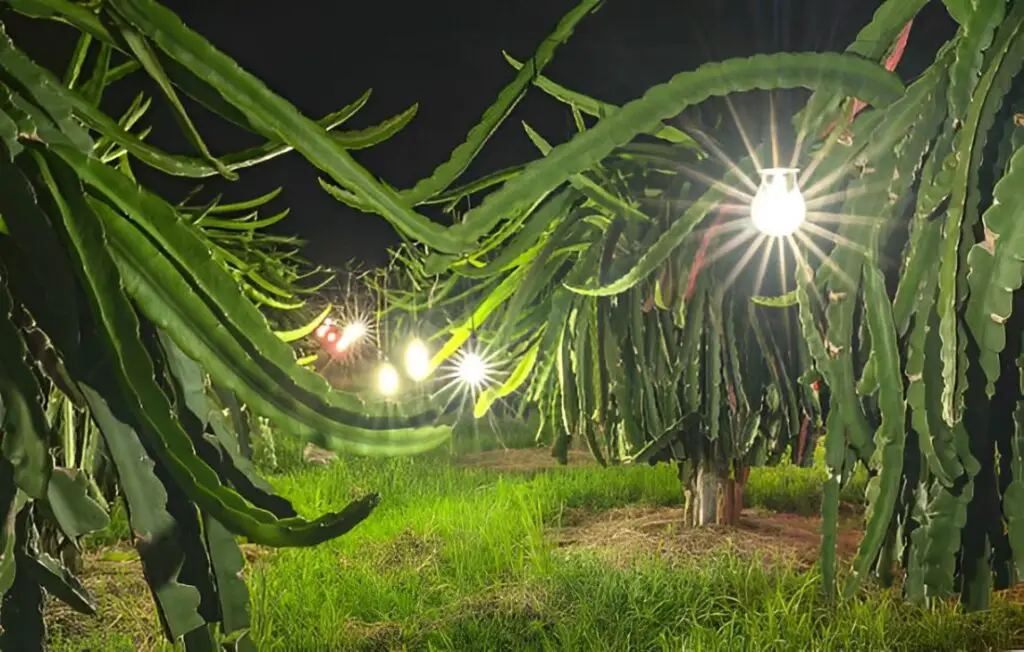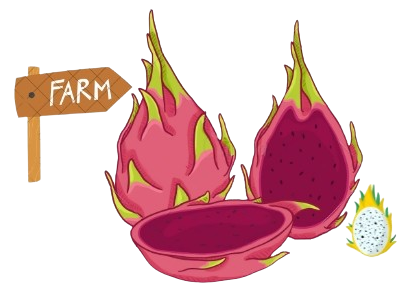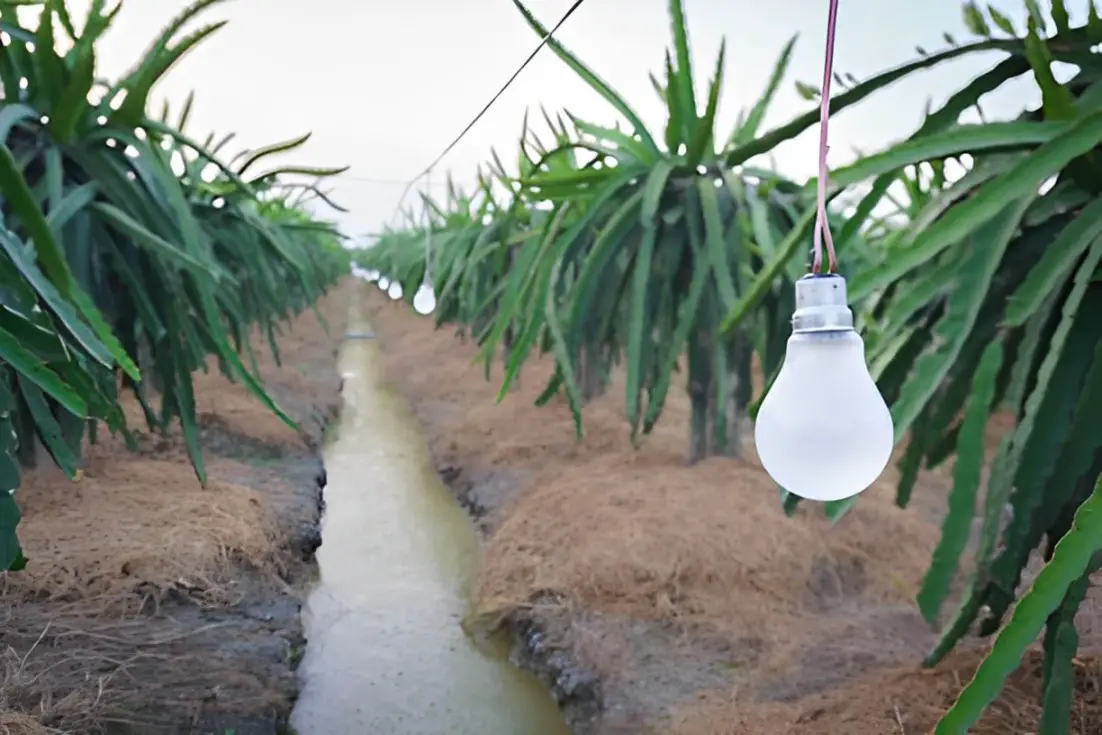Dragon fruit, also known as Pitaya, is one of the most sought-after tropical fruits in the world. Gaining immense popularity due to its unique appearance and health benefits, it has become a favorite among consumers globally. Vietnam has emerged as a leader in year-round dragon fruit production Offseason Fruiting of Dragon Fruit, while India is gradually embracing this fruit. However, in India, dragon fruit cultivation is still predominantly seasonal, with most harvests occurring only during specific months of the year.
As the demand for dragon fruit continues to rise in international markets, many farmers and agricultural experts are exploring ways to produce it throughout the year. In particular, the concept of offseason fruiting has gained significant attention. Offseason fruiting allows farmers to extend the production season, ensuring that they can meet market demand even during periods when the fruit is not naturally available. However, implementing offseason fruiting techniques can be particularly challenging in areas with unfavorable climatic conditions. Let’s dive deeper into the techniques, benefits, and potential of offseason fruiting of dragon fruit.
What is Offseason Fruiting of Dragon Fruit?

Under normal circumstances, dragon fruit fruits during the warmer months, from late June to October. This period is marked by multiple flowering cycles, which occur at regular intervals, allowing the plant to produce fruits consistently during these months. However, in countries where dragon fruit farming has been established for years, experts have found ways to extend the fruiting period by artificially manipulating certain environmental factors.
This process, known as Offseason Fruiting of Dragon Fruit, involves using specific techniques to induce fruiting outside of the natural fruiting cycle. By doing so, farmers can harvest dragon fruit at times when the supply is typically low in the market, allowing them to sell the fruit at higher prices due to increased demand.
Offseason fruiting is especially beneficial in regions with inconsistent weather patterns or when farmers want to maximize their yields by producing two harvests per year instead of just one. For farmers in colder regions like North India, where temperatures may not be suitable for year-round cultivation, implementing such techniques can lead to more profitable and consistent farming.
The Benefits of Offseason Fruiting

1. Increased Profitability
One of the most significant advantages of Offseason Fruiting of Dragon Fruit is the potential for higher profits. Dragon fruit prices are subject to seasonal fluctuations, meaning that the fruit is generally more expensive when it is in limited supply. By using offseason fruiting techniques, farmers can ensure a continuous supply of dragon fruit in the market, even when other regions are not producing it. This allows them to sell the fruit at higher prices, resulting in increased profitability.
2. Supply Chain Consistency
The global demand for dragon fruit is high, and ensuring a consistent supply of this exotic fruit can help meet market expectations. Offseason fruiting can bridge the gap in the supply chain by producing fruit when it is typically scarce. This consistency not only benefits farmers but also retailers, exporters, and consumers who rely on the availability of dragon fruit throughout the year.
3. Higher Yield Per Year
Normally, dragon fruit plants produce fruit only once or twice per year. With the implementation of offseason fruiting techniques, it is possible to harvest twice in a year. This means that farmers can increase their yield and thus enhance their income potential over time.
Techniques for Achieving Offseason Fruiting

Dragon Fruit Offseason Fruiting Methods
Achieving offseason fruiting of dragon fruit requires precise control over the plant’s environment, as the natural fruiting cycle is influenced by light, temperature, water, and nutrient levels. Here are some of the most effective techniques used by farmers to ensure offseason fruiting:
1. Artificial Lighting
Dragon fruit’s flowering cycle is highly sensitive to light, as the plant relies on a specific light duration (photoperiod) to trigger blooming. During the Offseason Fruiting of Dragon Fruit, especially in winter, when daylight hours are shorter, the plant may not receive enough natural light to induce flowering.
To overcome this, farmers use artificial lighting systems. LED bulbs or CFL lights are used to extend the amount of light the plant receives. Typically, the plants are exposed to 10-12 hours of light per day, even during the night. The red and blue light spectrums, in particular, are beneficial for promoting plant growth and stimulating flowering.
2. Temperature Control
Dragon fruit is native to tropical and subtropical regions and thrives in temperatures between 15°C and 30°C. In cold climates or during winter months, maintaining the proper temperature becomes a challenge.
Farmers can use polyhouses (temporary greenhouses) or greenhouses to regulate the temperature around the plants. These controlled environments help ensure that the plant does not experience temperature stress, which can negatively impact its growth and fruiting. Additionally, during very cold months, heaters or solar panel heating systems can be used to maintain an optimal temperature range.
3. Irrigation Management
Proper irrigation is crucial for the growth of dragon fruit, especially during the offseason. While most plants tend to require less water during colder months, dragon fruit actually needs more water during the offseason to maintain its health. Reducing irrigation during the winter months can cause the plants to become stressed and may result in poor fruiting.
The use of drip irrigation systems is highly recommended. This system ensures that water is delivered directly to the roots, avoiding water wastage and ensuring that the plants receive the right amount of moisture for healthy growth.
4. Mulching
Mulching plays a critical role in maintaining a stable growing environment for dragon fruit. Organic mulches, such as straw, leaves, or compost, are applied around the base of the plants to help retain soil moisture and regulate soil temperature. This helps maintain the roots’ stability during temperature fluctuations and ensures the plants’ overall health.
5. Fertilization and Nutrition
During the offseason, dragon fruit plants require sufficient nutrients to maintain their growth and ensure fruiting. Fertilizers high in potassium and phosphorus are particularly effective in promoting flowering and fruit development. Organic fertilizers or chemical fertilizers can be applied to meet the nutritional needs of the plant.
6. Hormonal Sprays
Hormonal treatments can be used to manipulate the natural growth cycle of the plant. Plant hormones like Gibberellic acid and Cytokinins can be sprayed on the plants to induce flowering and fruiting. These hormones stimulate cell division and elongation, speeding up the process of flowering and fruit development.
Offseason Fruiting in Cold Regions: Challenges and Possibilities
One of the primary challenges for dragon fruit farming is cultivating the fruit in colder regions, such as Himachal Pradesh, which experiences harsh winters. how to harvest dragon fruit Since dragon fruit requires warm temperatures and sunlight to grow, it can be difficult to grow in areas with freezing temperatures and limited sunlight.
Challenges in Cold Regions:
- Low Temperatures: In regions like Himachal Pradesh, winter temperatures can drop to as low as 0°C, which is not conducive to the growth of dragon fruit. The plant requires a temperature range of 8°C to 38°C to thrive.
- Frost and Snow: Severe frost and snow can damage the plants, leading to stunted growth or even plant death.
- Reduced Sunlight: Dragon fruit needs 6-8 hours of direct sunlight per day, but in colder regions, the amount of sunlight during the winter months may be insufficient.
Possibilities in Cold Regions:
While it is difficult to grow dragon fruit on a large scale in cold regions like Himachal Pradesh, smaller-scale farming using modern techniques such as polyhouses and greenhouses can make it possible. By controlling the temperature and light exposure, farmers can create a suitable environment for dragon fruit cultivation, even during the offseason. However, large-scale commercial farming in such areas remains a challenge due to the high costs of maintaining controlled environments and the difficulty of protecting plants from extreme cold.
Tip of the Day for New Farmers
Tip: Understand Your Environment Before Planting
Before you begin farming dragon fruit, it’s essential to evaluate your environment thoroughly. Climate, temperature, and sunlight availability are crucial factors in determining whether dragon fruit will thrive in your region. If you’re in a colder area, consider using polyhouses, artificial lighting, and heating systems to regulate the environment and extend the growing season. how to harvest dragon fruit – Always start small and gradually scale up as you learn the nuances of dragon fruit farming.
FAQs on Offseason Fruiting of Dragon Fruit
Q1: What is the price of dragon fruit in the market?
- Dragon fruit prices range from ₹150 to ₹300 per kg, depending on the region and season.
Q2: How many times does dragon fruit fruit in a year?
- Dragon fruit generally fruits once or twice a year, depending on the climate and farming techniques used.
Q3: Is offseason fruiting of dragon fruit happening in India?
- Yes, offseason fruiting is being experimented with in certain regions of South India, although it is still on a small scale.
Q4: What are the benefits of offseason fruiting for farmers?
- Dragon Fruit Offseason Fruiting Methods allows farmers to sell dragon fruit at higher prices during times when supply is limited, increasing their profitability.
Q5: How do artificial lights help in offseason fruiting?
- Artificial lighting extends the photoperiod, encouraging the plant to flower and fruit even during the offseason when natural sunlight is insufficient.
Q6: Can dragon fruit be grown in cold areas like Himachal Pradesh?
- While challenging, it is possible to grow dragon fruit in cold regions using polyhouses and temperature control techniques, though large-scale farming remains difficult.
Q7: How much water does dragon fruit need in the offseason?
- Dragon fruit requires more water during the offseason. Using drip irrigation helps provide the right amount of water to the plants.
Q8: What types of fertilizers are used for offseason fruiting?
- Organic fertilizers rich in potassium and phosphorus are used to promote flowering and fruiting during the offseason.
Q9: How does hormonal spraying help in fruiting?
- Hormonal sprays, such as Gibberellic acid, stimulate faster flowering and fruit development, helping induce offseason fruiting.
Q10: How can I ensure my dragon fruit plants survive winter?
- Using polyhouses, maintaining proper temperature control, and ensuring the plants get enough nutrients can help dragon fruit survive and fruit during winter.


2 thoughts on “Maximize Offseason Fruiting of Dragon Fruit with Proven Techniques”